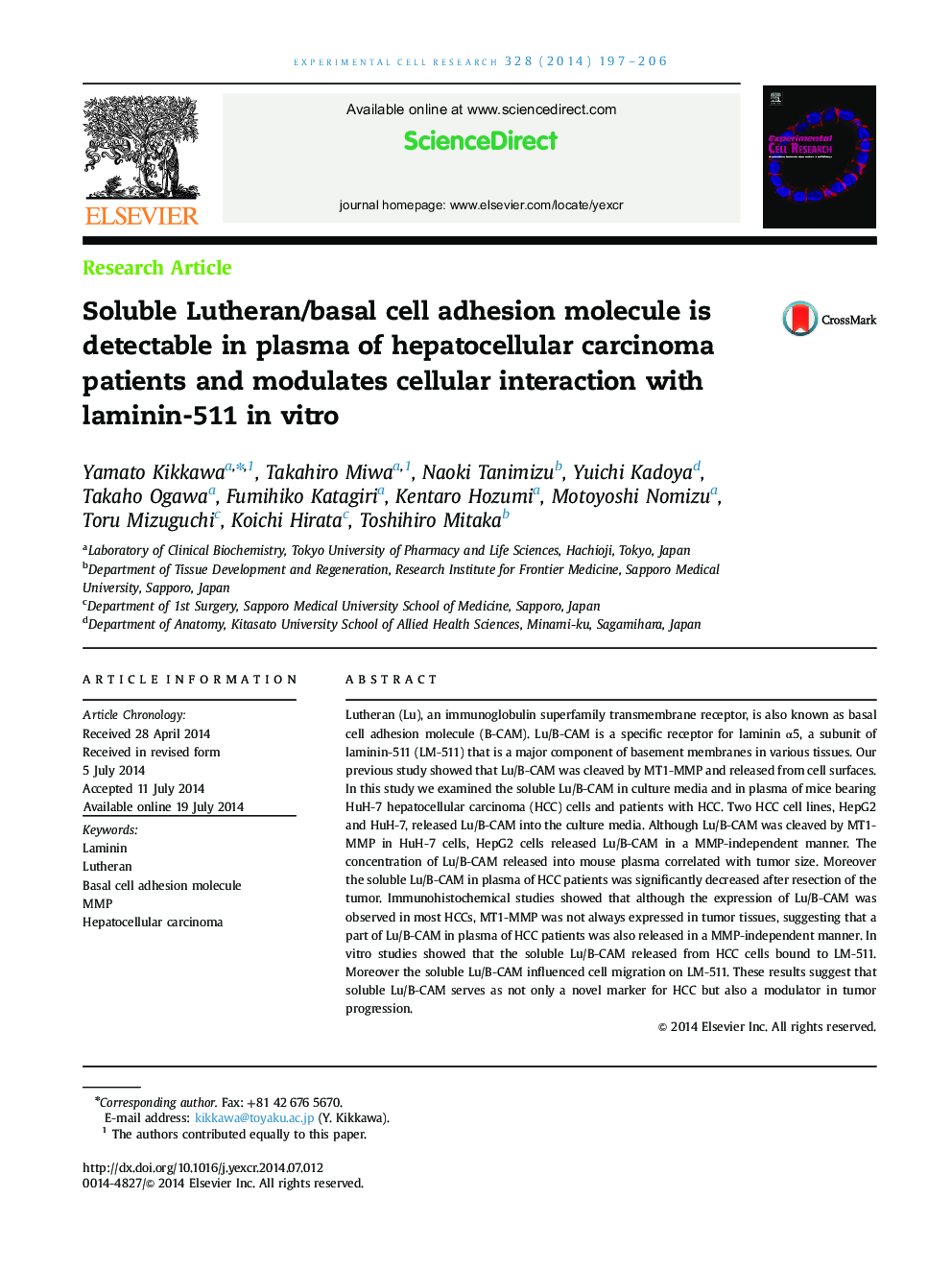| کد مقاله | کد نشریه | سال انتشار | مقاله انگلیسی | نسخه تمام متن |
|---|---|---|---|---|
| 2130299 | 1086549 | 2014 | 10 صفحه PDF | دانلود رایگان |
• Lu/B-CAM is released from the cell surfaces of hepatocellular carcinoma (HCC).
• Lu/B-CAM is cleaved by not only MT1-MMP but also a MMP-independent manner.
• Soluble Lu/B-CAM in plasma of HCC patients is decreased after surgical resection.
• Soluble Lu/B-CAM influences the cellular interaction with laminin-511 (LM-511).
Lutheran (Lu), an immunoglobulin superfamily transmembrane receptor, is also known as basal cell adhesion molecule (B-CAM). Lu/B-CAM is a specific receptor for laminin α5, a subunit of laminin-511 (LM-511) that is a major component of basement membranes in various tissues. Our previous study showed that Lu/B-CAM was cleaved by MT1-MMP and released from cell surfaces. In this study we examined the soluble Lu/B-CAM in culture media and in plasma of mice bearing HuH-7 hepatocellular carcinoma (HCC) cells and patients with HCC. Two HCC cell lines, HepG2 and HuH-7, released Lu/B-CAM into the culture media. Although Lu/B-CAM was cleaved by MT1-MMP in HuH-7 cells, HepG2 cells released Lu/B-CAM in a MMP-independent manner. The concentration of Lu/B-CAM released into mouse plasma correlated with tumor size. Moreover the soluble Lu/B-CAM in plasma of HCC patients was significantly decreased after resection of the tumor. Immunohistochemical studies showed that although the expression of Lu/B-CAM was observed in most HCCs, MT1-MMP was not always expressed in tumor tissues, suggesting that a part of Lu/B-CAM in plasma of HCC patients was also released in a MMP-independent manner. In vitro studies showed that the soluble Lu/B-CAM released from HCC cells bound to LM-511. Moreover the soluble Lu/B-CAM influenced cell migration on LM-511. These results suggest that soluble Lu/B-CAM serves as not only a novel marker for HCC but also a modulator in tumor progression.
Journal: Experimental Cell Research - Volume 328, Issue 1, 15 October 2014, Pages 197–206
